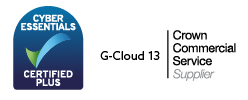Advice for handling increased call volumes during the Coronavirus crisis.
1. Bring in staff from other departments: Organisations can pivot existing staff to the contact centre. They don’t need to be skilled up on all channels/contact reasons but teaching staff how to handle one contact reason and then adjusting routing can help to reduce queue times.
2. Communicate with other departments! Remove any non-essential communications which could cause call volumes to rise further. Liaising with other teams within your organisation will remove confusion and help avoid driving unnecessary contact.
3. Be clear with your customers: It’s important to explain to your customers what you want them to do/the best way for them to get in touch. Don’t just hide your contact details if you don’t want customers to call you – all you’ll do is annoy them! Explaining that the contact centre is seeing high volumes and that the business is prioritising the vulnerable is a much more honest approach and most customers will understand. Try suggesting another channel for non-essential customers and being straightforward about when they can expect a response.
4. Set expectations: Use your IVR to apologise for customers experiencing longer-than-usual wait times and explain why the queues are so long. Make sure you’re honest about communicating expected wait time. Avoid playing the same apology and message repeatedly for customers – this is a sure-fire way to drive them crazy!
5. Analyse potential drivers of Failure Demand: Make sure that you have assessed exactly why people are calling. If you’re providing inconsistent, confusing advice, or not making it clear which channels customers should use to reach you, you’ll generate more calls to the contact centre. Look at the key points in your customer journey, examine the advice you’re sharing on your website and see if there are underlying issues with clarity or accessibility that you can address.
6. Minimize After-Call-Work Time: Look at where you could make small gains in Average Handling Time (AHT) without negatively impacting the advisor experience. Encourage your agents to take notes during calls, spread the use of acronyms across the contact centre to increase the speed at which advisors can type notes, and make sure that this is a clear part of the induction process for any staff you’re pivoting from other roles. An intuitive and easy to use agent desktop like NICE inContact's CXone will help reduce complexity and stop agents needing to navigate between multiple screens to access information.
7. Avoid Using Callbacks: When call volumes remain at a sustained high volume, expecting callback solutions to ease the pressure can actually make things much worse. Adding an extra step to the advisor journey (having to call the customer back) increases wait times further.
8. Don’t Forget About Staff Morale: This is a difficult time for everyone – your business, your customers and, of course, your employees. For agents working in these uncertain times, there are many external stressors that could reduce morale. Whilst agents may be trained in skills like resilience, dealing with difficult and emotional customers can be especially challenging now. Reassure your employees that you’re on their side; offer guidance by setting up a dedicated employee helpline, organise regular team check-in’s if agents are working remotely, and keep encouraging and supporting your teams. A little understanding can go a long way.
For contact centres looking to rapidly move to a remote workforce, NICE inContact have a cloud-native offering designed to enable contact centres to continue delivering great customer service while transitioning their workforces to work from home in 48 hours or less. Demonstrating the speed and agility that the cloud offers, Route 101 were recently able to implement the CXone platform for a leading UK healthcare provider in just days.


